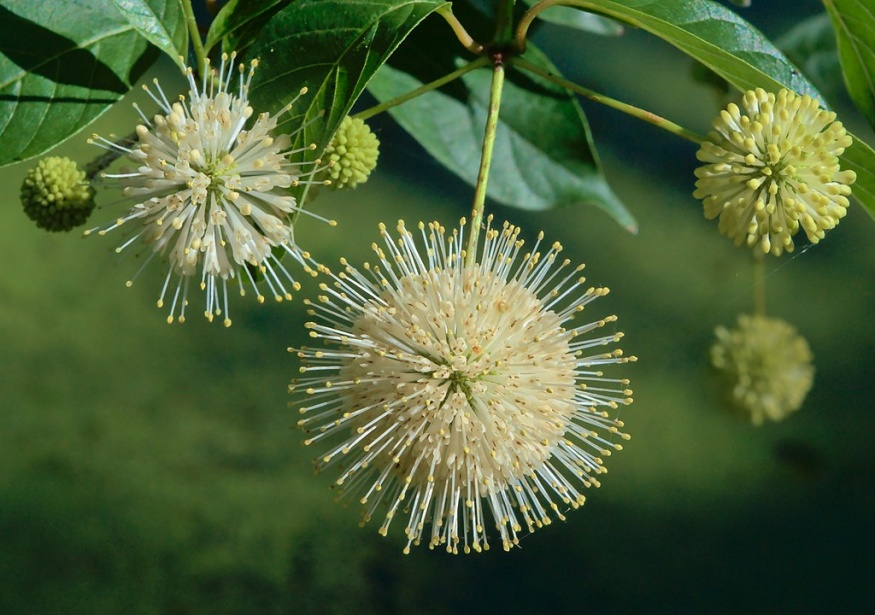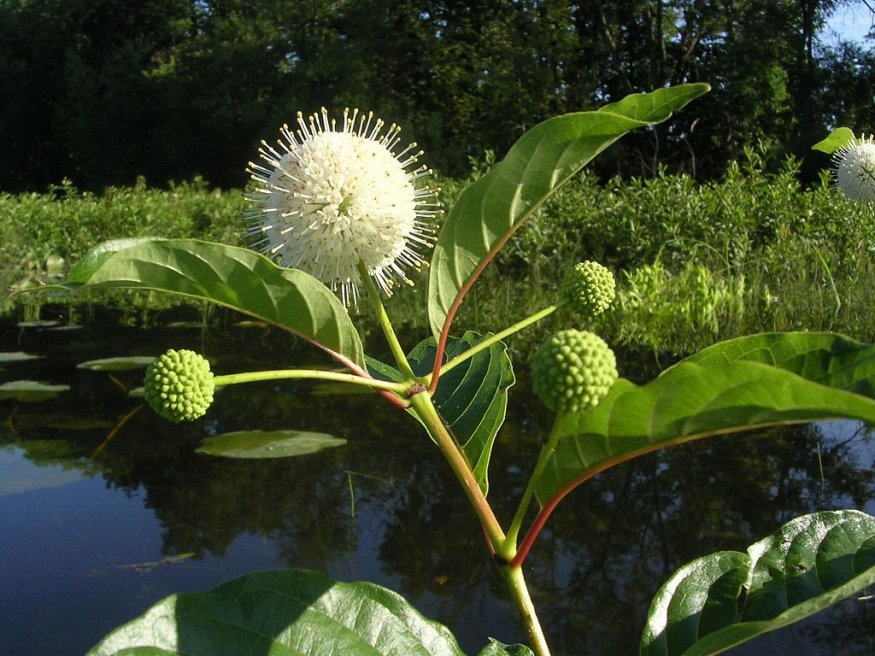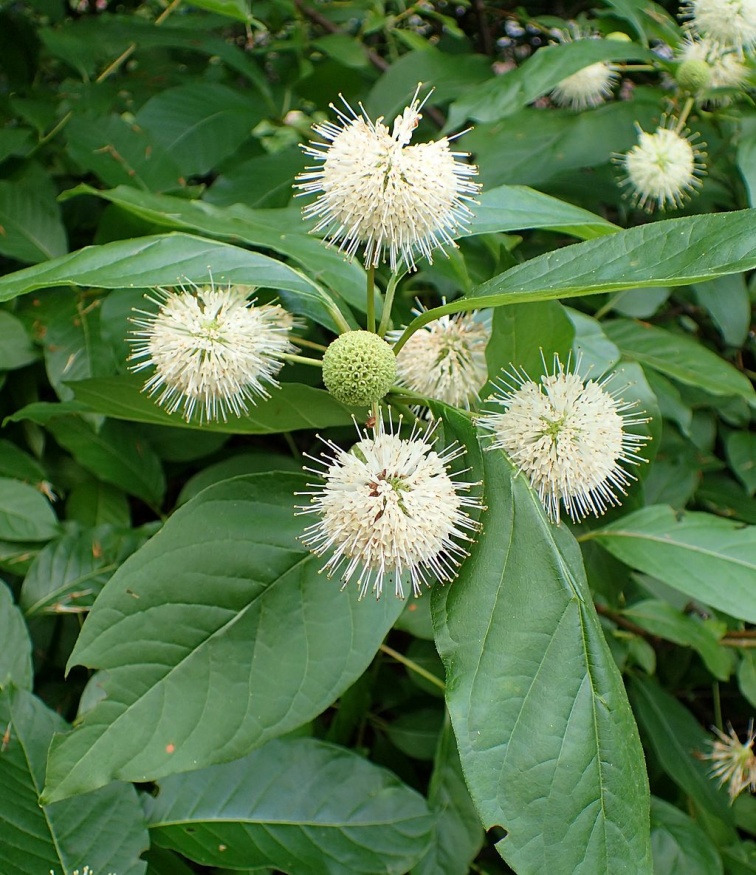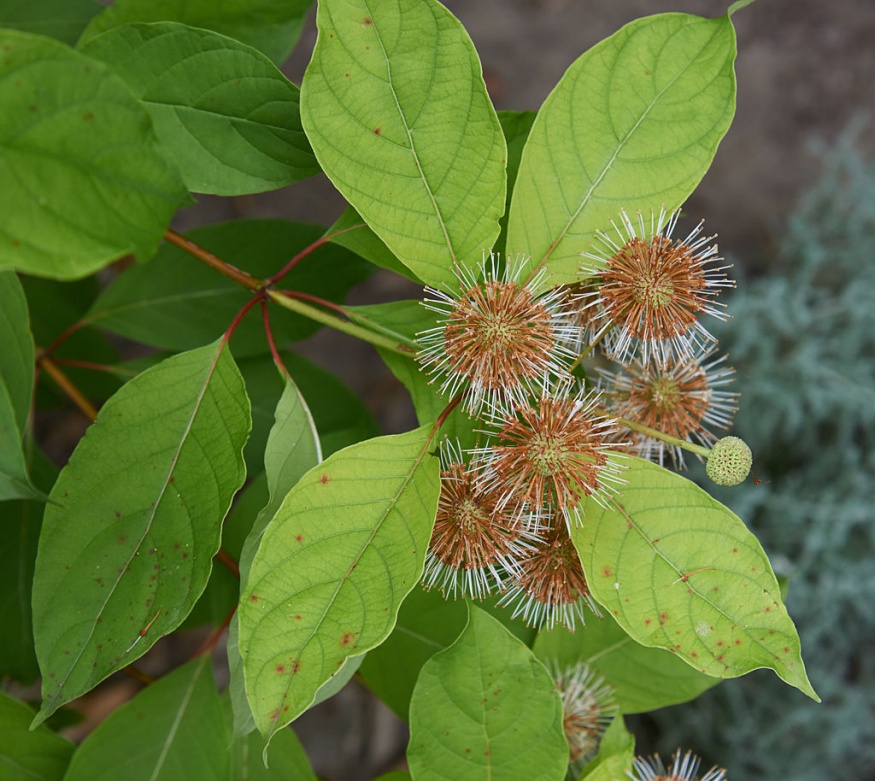Buttonbush

Family: Rubiaceae Native to: Eastern North America
Hardy to zone: 4
Eco benefits: attracts pollinators, erosion control, attracts birds, pest/disease resistance
Natural habitat: swamps & bogs, waters edge, floodplains, dunes
Shapes: round, irregular, clump
Height: 5-12ft
width: 4-8ft
Growth rate: medium
Unique attractions: flowers, fruit, winter interest
Common uses: specimen, naturalized plantings, rain garden
Light: full sun, partial shade
Soil: moist and fertile, tolerates wet feet, wet
Buttonbush is a unique bushy shrub native to eastern North America. It grows well in moist humus to wet conditions in thickets, swamps, pond margins, and bottomlands. Usually a shrub in size but can rarely grow to 20 feet high. The shape is irregular to round, and if grown to an unmanageable size it may be cut back to the near ground.
In late spring, bright green glossy leaves appear. Their shape is ovate to elliptic and they grow in pairs or whorls around the stem. In early to mid summer, fragrant showy white flowers appear and are arranged as tiny tubes in a ball shaped cluster. The flower styles project out, giving the clusters a pin cushion like appearance. Hard showy reddish brown ball like fruit follow flowering and persist into winter. The fall leaf colour is red then turning brown.


Pollinators include hummingbirds, butterflies, and other insects. The shrub also attracts numerous bird species as well as mammals. Popular uses for buttonbush include native woodland, pondside, or rain gardens.

References
Missouri Botanical Garden. (n.d.). Cephalanthus occidentalis. Retrieved from http://www.missouribotanicalgarden.org/PlantFinder/PlantFinderDetails.aspx?kempercode=g830
The Morton Arboretum. (n.d.). Buttonbush. Retrieved from https://www.mortonarb.org/trees-plants/tree-plant-descriptions/buttonbush
NC State Extension. (n.d.) Cephalanthus occidentalis. Retrieved from https://plants.ces.ncsu.edu/plants/cephalanthus-occidentalis/